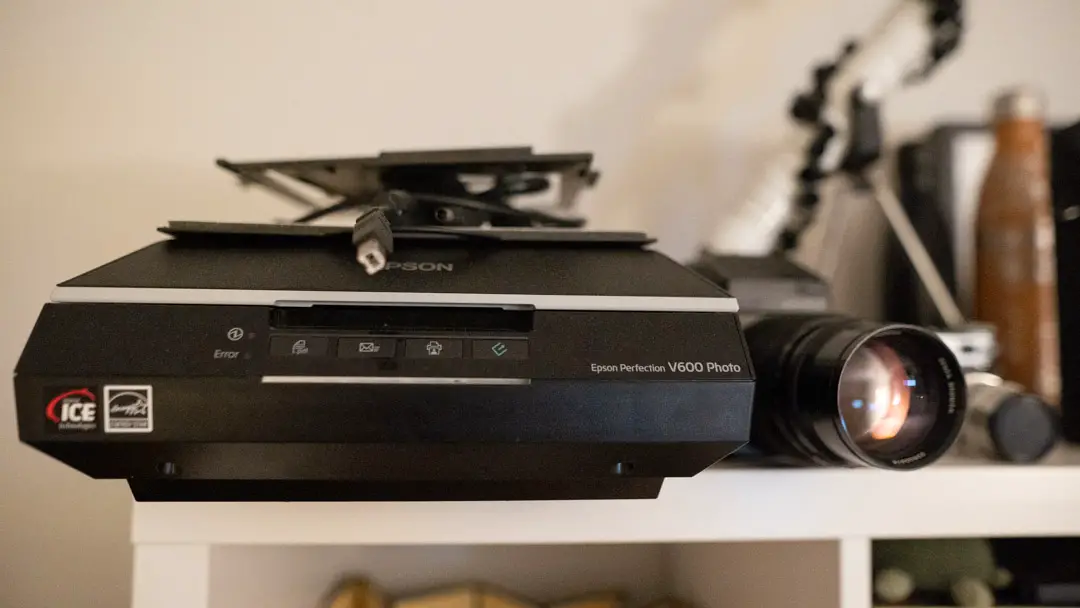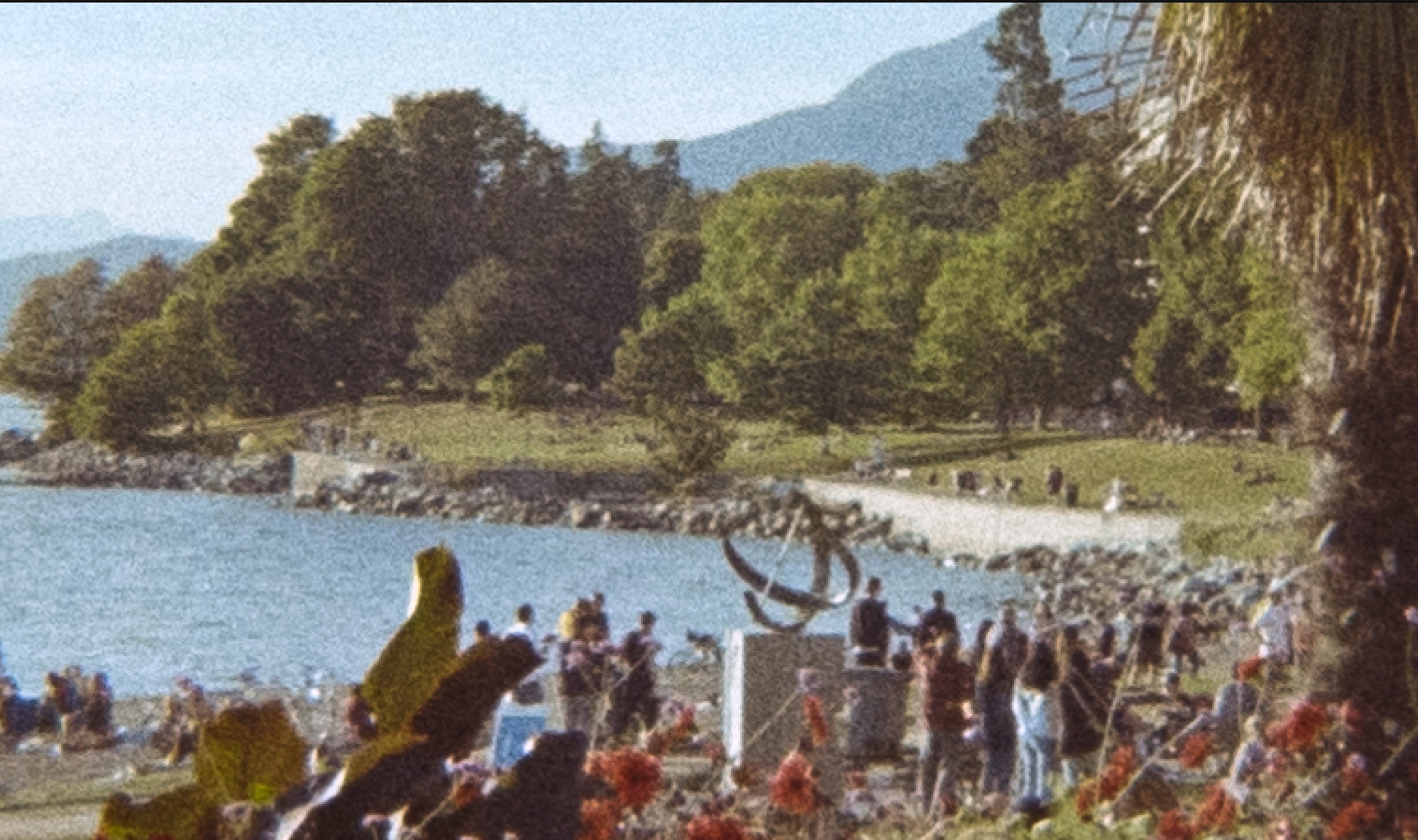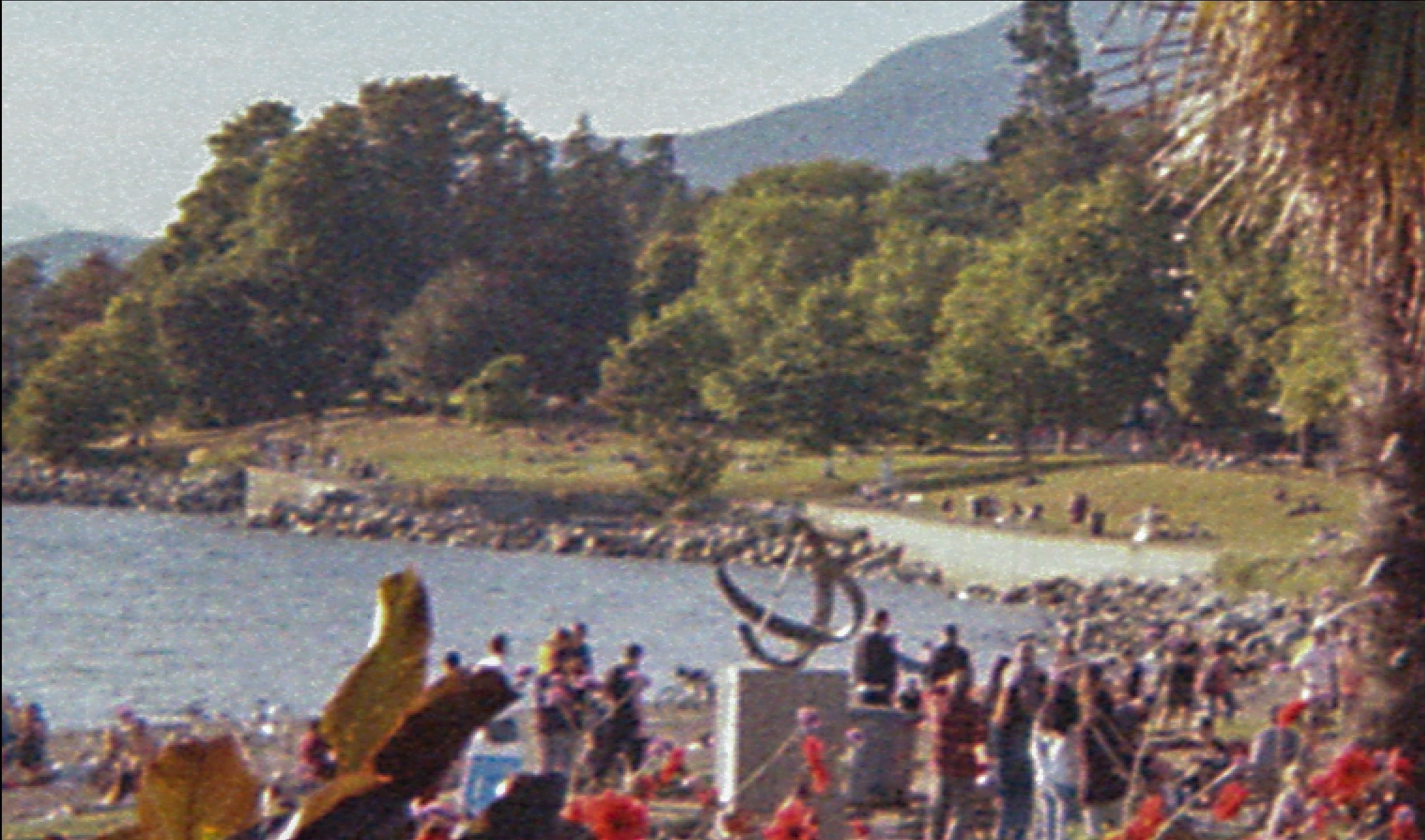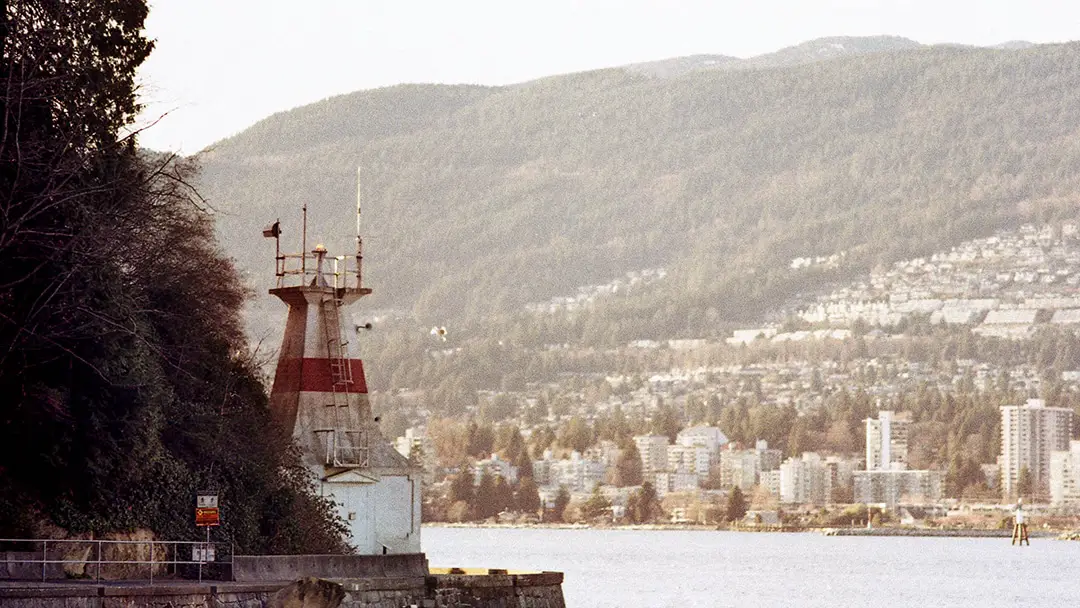One of my first purchases as a new film photographer was the Epson V550. I used that scanner for a couple years, scanning rolls for myself and my friends late into the night. I’m sure I pissed off more than a couple neighbours with the electronic whirring piercing through the thin walls of my Montreal apartment.
Later on, I moved across the country. And since I was going by plane, it didn’t make sense to bring the scanner with me. So I sold it, and elected to buy another after attempting low-budget DSLR scanning with the equipment I already had on hand.
Lacking a reliable way to mount my DSLR, and not having a dedicated macro lens, I went back to the Epson scanners. This time, I went for the V600 for no reason other than Amazon no longer stocked the $50 cheaper V550.
But now, a year later, I’ve revisited DSLR scanning, and have been loving the results I’m getting with my Sony A7III. A big reason for that is because I bought the right equipment to make it work this time. (Find out what gear I use to scan film with my digital camera here).
But even though I admit there are many reasons why DSLR scanning is superior to using a flatbed scanner, I do believe that this unit still has a place on the market. If you’re new to film photography and are thinking about purchasing one of these scanners, I absolutely recommend it. But if you already have a DSLR camera with a macro lens, then it may be worth spending a bit extra to get into scanning with your camera.
Before we get into it, let’s go over what exactly are the differences between the V550 and the V600 scanners

Epson V550 and V600 Overview
The Epson V600 was originally released back in 2009, while the V550 weirdly came out in 2013. That said, the scanners both contain the same scanning technology from the 2009 version, and come with film holders capable of scanning 35mm and medium format film.
When these models were released, were meant to help entry-level consumers digitize their collection of film photos. Both the V600 and V550 were cheap, reliable, and produced good enough results if you were cataloguing family negatives.
Professional photographers will be pushed to the Epson V750, or Epson V850 models, which have better film holders and are also capable of scanning 4×5 or 8×10 negatives.
The only benefit the V600 scanner has over the V550, is that the V600 has a software update allowing it to use Digital ICE to remove dust and scratches on prints and negatives, where the V550 can only perform dust removal on negatives. Otherwise the scan quality, film holders, size, shape, and weight all remain identical.


The images aren’t as sharp, and the files aren’t as flexible
When I finally got my latest DSLR film scanning setup together, there was an immediate, noticeable difference. I could see the graininess in the film. So finally, I was able to tell that the reason my photos weren’t sharp wasn’t just film inherently being softer than digital. Turns out I’m just bad at focusing manual lenses.
Just joking of course, but being able to see that much more detail from DSLR scans means that I can crop the images more without losing quality. Meanwhile, the V600 scanner has a maximum effective resolution of around 1560 DPI, despite advertising that says it is capable of to scanning up to 6400 DPI. Going any larger than the 1600 DPI setting is simply introducing extra bulk (up to 1Gb, to be precise) to the image without creating any extra details to work with in Lightroom or Photoshop.
The V550 and V600 are still using the same imaging sensors Epson developed back in 2009. Even for the time, they weren’t known for producing sharp results.
The other benefit of scanning with a DSLR is the colors. Digital cameras shooting raw are able to capture far more colors and dynamic range in a single image than a flatbed scanner — no matter what model. And if you’re working with dense negatives, there’s even room to get more detail by combining exposures to make an HDR scan.
Getting consistent results is near impossible
This is a big sticking point for me. Getting consistent results on color film scans is a new phenomena for me. Modern print film wasn’t meant to have a baked in color like films of the past. They were designed for maximum flexibility so that the user could shoot indoors and outdoors on the same roll, and then decide how to adjust the colors in the darkroom.
But the issue I’ve had with the Epson scanner and both the bundled Epson and Silverfast scanning applications is that I was never able to get the same look from image to image. I would get different results even if the images were shot within seconds of each other in the same light.
DSLR scanning fixes that problem. If I’m shooting all in the same scene, I can copy and paste the settings from the converted Negative Lab Pro scans onto different images in Lightroom.
Loading and unloading the film takes forever
These scanners can only scan 3x 6×6, 4x 6×45, or 2x 6×7 negatives when shooting medium format. For 35mm, it can scan a total of 12 shots each time. No matter what, this means you’re loading and unloading the film holders between 4 and 5 times to scan a single roll of film.
Whether it’s 120 or 135 film, I find a single roll of film can take between 45 minutes and hour depending on how much manual adjustments need to be done per roll of film. If the scanning application is unable to automatically detect the film borders, you’ll be spending an hour or more.
When scanning with a DSLR, you can scan the entire roll in a single strip using something like the Essential Film Holder. This device holds the film perfectly flat, and allows the user to slide the film through, perfectly lining up each frame between scans. This speeds up the scanning process significantly. However, using Negative lab pro is still time consuming. In the end, scanning a roll of film on a DSLR takes between 30 minutes and an hour depending on the complexity. 120 film, however, is much faster with DSLR scanning than 35mm.
The machine in unfailingly dusty
I don’t know how, but even if I only put the scanner away for the lunch break, it’ll be dusty by the time I get back. The glass seems like it’s consistently electrically charged, attracting large quantities of sticky super dust. Regular cloths don’t seem to work, even with a good amount of spray.

Would I still recommend the Epson V600?
Here’s the thing. There is a time and place where the Epson V600 shines. And that’s that it’s a simply device that gives hassle-free usable results. Even if the scans aren’t perfect, they’re far far better than anything done with a mobile phone.
In the end, this scanner works well. And it’s far cheaper for entry-level users than purchasing a scanning setup — and that’s true even if you already have a digital camera. For my setup, I spent $500 on a Manfrotto tripod with the horizontal column, $40 on a light pad, $140 on the Essential Film Holder, and another $450 on a macro lens. For that price, I could have bought almost 4 Epson V600 scanners.
At the price, this scanner pays itself off after scanning around 15 rolls. And I’ve scanned hundreds with it. So over time, I’ve absolutely gotten my money’s worth.
For beginners, the Epson flatbed scanners are going to be everything you need. They will produce better images with medium format negatives, but even 35mm scans at a high-enough quality to make it worthwhile. Over time you will outgrow this device. And that’s not a bad thing. It’s just enough to keep you going in film photography without spending fortunes of cash on lab scans.
There are thousands of memories that I have catalogued only because of this scanner. And I don’t regret purchasing it. I’ve outgrown this scanner for this period in my life, but I know for a fact that there are thousands of photographers out there who will benefit more from purchasing this scanner than they would from getting film scanned at a lab, or purchasing a DSLR scanning rig.

By Daren
Daren is a journalist and wedding photographer based in Vancouver, B.C. He’s been taking personal and professional photos on film since 2017 and began developing and printing his own photos after wanting more control than what local labs could offer. Discover his newest publications at Soft Grain Books, or check out the print shop.

Dear Sir, thanx for this informative article. I had the same problems with filmscanning with a flatbedscanner and builded the following (second-hand economical) setup:
– Sony A7 camera (400$)
– Nikon Nikkor 55mm F3.5 Micro lens (60$)
– Digitaliza 120 film holder (30$)
– A mirror to ensure the film and the sensor are parallel (10$)
– Kaiser light box (70$)
– A Durst M800 enlarger column (100$)
Works like a dream!
https://www.flickr.com/photos/191974230@N06/51058143967/in/album-72157718301927422/
Thank you for this incredibly helpful description of how you’ve outgrown the V600. My needs are minimal, so I would buy one if I could find one at a reasonable price. Unfortunately, the price has been rather high ($250) and even used they seem to be in high demand at the moment.
The only way discount I was able to get was a student discount from B&H (from $250 to $190), so maybe you could try to ask a student to use their .edu account to make a B&H EDU Advantage account.
I need some advice. I was a wedding photographer in the days of Hasselblad negatives. Now I am a digital classic car and hot rod photographer. I am retired from weddings and portraits and wish to purge and minimize my “immense collection” negatives. What negative (and slide) scanner is capable of me putting down as many negs on the glass as I can, run a scan to see what the converted pictures look like (I want the preview to look like a normal pic) and then I’ll scan some more.( I don’t care about high quality since I am basically wanting to screen the negs like “proofsheets” in the old days) In the end I might save some, but 80% are going in the trash, and the other 20% I’ll rescan. I just want to “see” a normal picture so that I can decide whether to keep the neg or not. (same goes for slides) I own a canon 8800f, but need to buy VueScan to use it on my Mac. I’m wondering if that is too old. (2007 release date) So….any advice or insights would be helpful before I go buying another scanner or software.
Hi Wayne,
I think the easiest way to go about it would actually be to use a DSLR camera if you have one available with Negative Lab Pro. For something like this, you could lay all the film down on a single light table (any cheap one on Amazon will do), and using a standard 35mm lens you can take the photo and then flip the negatives to positives using negative lab pro. It’ll be easier if you have a sheet of anti-glare glass to keep the negatives flat, otherwise, archival sleeves will work in a pinch, but you might have to deal with some reflections.
You could get through an entire sheet by taking a single photo with a DSLR, rather than going through the pain of setting up your film inside a scanner like the Epson V550/V600 or the Canon 8800f.
The Epson V600 should actually be fairly identical in quality to the Canon since the Epson design hasn’t changed since around 2007 as well. The only difference is you’d be getting a shiny new machine rather than one that’s been sitting for some time. So if you don’t have a DSLR, then I’d probably stick with the 8800f — but maybe just use the regular scanning, the way you would a print, instead of scanning it as a negative in the film holders.
Let me know if that helps!
Daren
Hi Daren,
Thank you very much for such an informative article. I am retired and need to embark on a project to scan all my old photos(prints) in order to preserve the fond memories. Based on my research, almost all websites are recommending the Epson 600, which was introduced in 2009. I am dumbfounded – it is 2022, why isn’t there a better photo scanner with more current technology, instead, I am contemplating the purchase of a machine with 12-year-old technology. Is there a better photo scanner in the market? I guess I will buy the V600 if there’s no better scanner.
Thanks,
Kim Chan
Feb 1, 2022
Hi Kim,
There are definitely more modern print scanners out there than the V600. The only reason people would be suggesting the V600 is if you also needed to scan negatives. But if you are only scanning prints, then there are other scanners out there that can for sure do a better, faster job, like this Epson FastFoto scanner that can scan prints in batches.
If you have negatives to scan as well, then the V600 might be a good option, but it is incredibly slow. It may also be worth looking at local businesses that are able to scan film in bulk.
Regards,
Daren
FastFoto scanner is poor compared to V600… yes, fast… but quality suffers.
Thank you wonders for the detailed review. Normally not too keen on reviews that go in-depth on the authors life. Yours helped me make the right decision, I think 🙂 Thanks a lot, cheers!
You know, that’s a good point. There’s a lot of fluff that can be trimmed here — I’ll revisit this one and make some changes. Glad to hear that it helped!
Hi Daren,
I am looking for a scanner to scan my artwork.
To sell? Maybe. I do artwork, mostly, with scenes of my hometown in Mexico.
I would try to market my artwork to the people of my hometown living here in America.
They don’t care much about the quality, they just want something that reminds them of our town. The EPSON V600 would work?
Hi Juan, the V600 would definitely work for your needs. Larger pieces of art will have much higher resolution scans since they take up a larger space on the scanning surface. The problems mostly have to do with film negatives, which contain a lot of tiny details on a super small surface.
I found your article looking for information on the v600.
I need to scan slides, prints and negatives from the 50’s. I need the best quality I can afford because we will want enlargements on a lot of them.
I have a Canon 7D ii (a rugged outdoor DSLR).
I was wondering if I should get a smaller dslr and follow the setup outlined in your article?
Will your suggested set-up work with slides and negatives.
I am not doing ANY film.
Thank you…
Hi there,
Your Canon 7Dii is actually going to be a fantastic camera for scanning negatives. You will definitely get higher resolution and sharper images using that camera than you will with a Epson scanner.
And yes, the suggested setup will also work perfectly for slides and negatives. They’re all essentially the same — the biggest difference is just how you convert negatives into positives. Negative Lab Pro does a fantastic job at converting the negatives, but it may also be worth checking out something like Negafix, which uses presets to quickly more convert any negative into a positive.
Let me know if you have any more questions, always happy to help out!
Daren
Hi,
For other negative format like 126, 127, 110, 616 look at negativesolutions on the Web. They have negative carrier for the Epson and for the CanoScan that fit those format.
I use a Canon mark ii and i have very good results but not as good as a DSLR scan.
Nikon D5500 with Nikkor 60mm macro Lens.
Have a Nice Day
hello darren. thank you so much for your article it was very helpfull. and made me reconsider trying scanning with a dslr but i only shoot film and have just this canon 600d to sometimes try things before i shoot it on film… would that be a good camera? and also what lens would you recomend?
Hi Catia Patricia Pereira,
No problem at all! Glad you found it useful! The 600D is a good camera for scanning for sure. It’s not the most modern, but it will definitely get you better results. For the best DSLR scanning results, you need a macro lens, though. I personally recommend the Sigma 70mm f/2.8 macro lens (find it on Amazon here). This is the best lens in terms of cost and performance — the Sigma 70mm f/2.8 quality rivals lenses that cost easily 2 or 3x as much. Overtime, you may want to upgrade the camera, but I think that one will still do a fantastic job when paired with a good lens.
Regards,
Daren